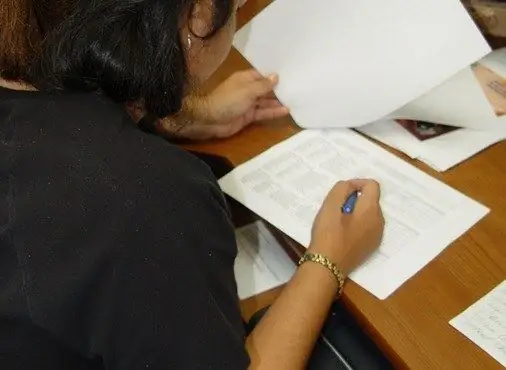- Author Isaiah Gimson [email protected].
- Public 2023-12-17 02:53.
- Last modified 2025-01-24 12:06.
In accordance with the Federal Law of the Russian Federation of July 27, 2010, No. 229-FZ, an invoice can be drawn up and issued on paper or in electronic form. In electronic form, invoices can be capitalized only if there is a written agreement between the parties and the necessary equipment for the transfer and receipt of documents. The invoice is the basis for accepting the presented tax amount for deduction.

Instructions
Step 1
Upon receipt of the invoice, check the availability of all the details: serial number, date of preparation, number and date of corrections made to the original version of the invoice, full and abbreviated name of the seller's organization in accordance with the constituent documents and its address, TIN and KPP, name and address of the consignor and consignee, buyer's details, name and currency code. If advance payments were sent, then the document must indicate the number of the payment order or other payment documents. The invoice must indicate the name of the currency.
Step 2
Check the correctness of filling in the table of the received invoice, which should include the following columns: name of the supplied goods or services, unit of measure, quantity of goods or services supplied under the invoice, price, cost of the total quantity of goods or services supplied under the invoice, amount excise duty on excisable goods, tax rate, value of the total number of goods or services, country of origin of goods in accordance with the All-Russian Classifier of the World (these columns are filled in for goods whose country of origin is not the Russian Federation), number of the customs declaration. If there are no indicators in the columns of the table, a dash is inserted. The cost of goods or services is indicated in rubles and kopecks.
Step 3
The invoice must be signed by the head of the selling organization. If it was created in electronic form, then there must be a digital signature of the head. If a document is issued on paper, then it is no longer accepted in electronic form, and if it was created in electronic form, the seller can duplicate it on paper with the signature of the chief accountant, but after that the re-sent invoice is invalid. In this case, a document received on paper is registered in the magazine and the purchase book.
Step 4
Enter the invoice details in the accounting journal. At the top of the form, the name of the company, TIN, KPP, tax period should be written. The journal consists of two parts: invoices issued and invoices received. The table of each of the parts contains the following columns: code of the method of issuing (on paper (1), in electronic form (2)), date and number of the invoice, name of the buyer or supplier, his TIN, other information, column code of the type of operation must to be filled in according to a special list, which will be approved by the Federal Tax Service of Russia in the near future. If an invoice contains several transactions, then they are all recorded in this column separated by commas.
Step 5
After filling out the magazine, stitch it and number it, sign with the manager and put a stamp. This document is drawn up for one tax period. The journal can be filled in electronically; upon transfer to the tax authorities, it will need to be certified with a digital signature.
Step 6
Based on the invoice, make an entry in the purchase book, which contains the following columns: date and number of the seller's invoice, date and number of the correction, date and number of the correction invoice, date and number of the correction of the correction invoice, date of payment of the invoice- invoices of the seller, the date of registration of goods (works, services), the name of the seller, TIN and KPP of the seller, the country of origin of the goods and the CCD number (for countries that are not part of the Russian Federation), total purchases, including VAT, the cost of purchases without VAT and VAT amount. The cost is indicated in rubles and kopecks. If there is no information on the invoice, you do not need to fill in the corresponding columns. The purchase book is drawn up for the tax period, it must be signed by the head of the organization, stamped, stitched and numbered. If the book is submitted to the tax office in electronic form, then it is necessary to seal it with an electronic digital signature.






